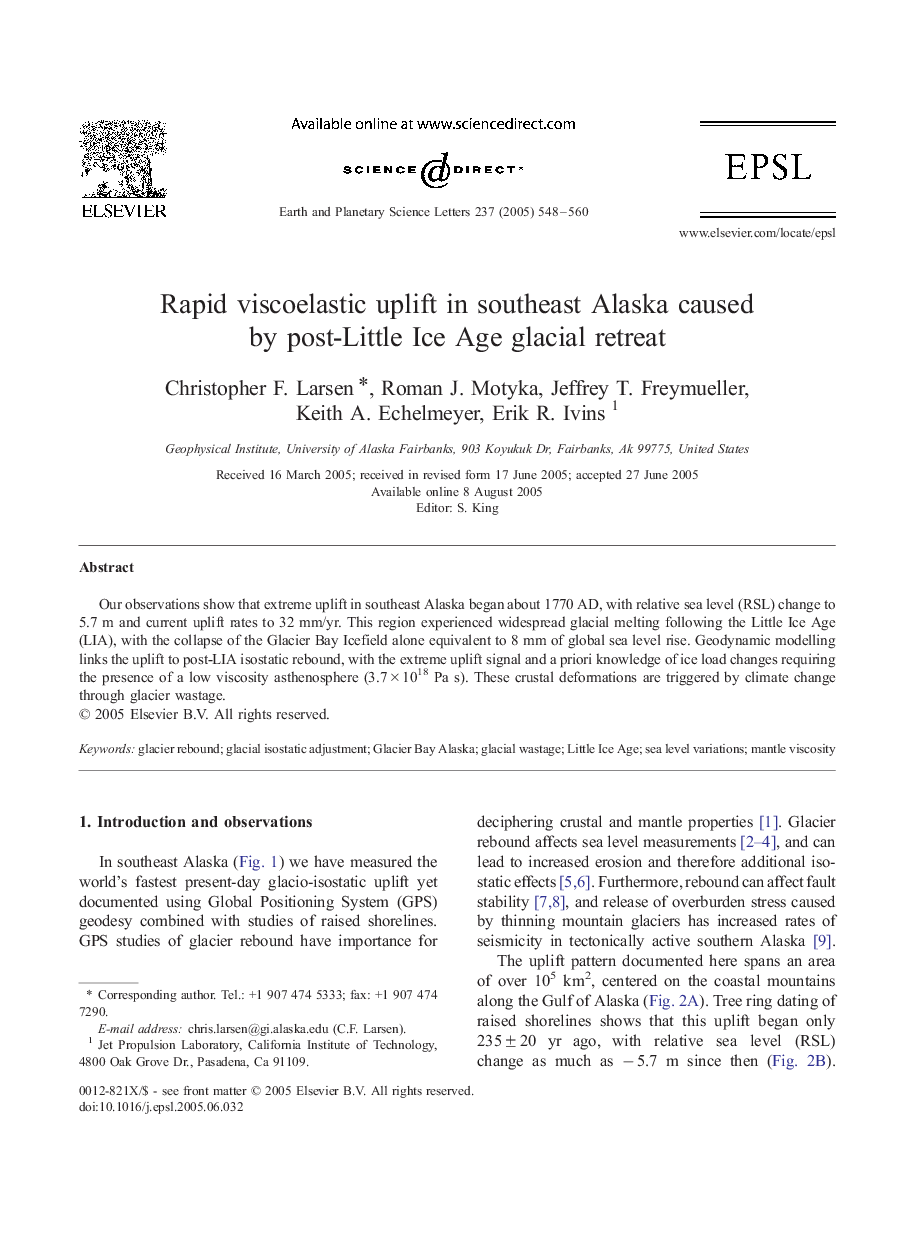| Article ID | Journal | Published Year | Pages | File Type |
|---|---|---|---|---|
| 9522054 | Earth and Planetary Science Letters | 2005 | 13 Pages |
Abstract
Our observations show that extreme uplift in southeast Alaska began about 1770 AD, with relative sea level (RSL) change to 5.7 m and current uplift rates to 32 mm/yr. This region experienced widespread glacial melting following the Little Ice Age (LIA), with the collapse of the Glacier Bay Icefield alone equivalent to 8 mm of global sea level rise. Geodynamic modelling links the uplift to post-LIA isostatic rebound, with the extreme uplift signal and a priori knowledge of ice load changes requiring the presence of a low viscosity asthenosphere (3.7Â ÃÂ 1018 Pa s). These crustal deformations are triggered by climate change through glacier wastage.
Related Topics
Physical Sciences and Engineering
Earth and Planetary Sciences
Earth and Planetary Sciences (General)
Authors
Christopher F. Larsen, Roman J. Motyka, Jeffrey T. Freymueller, Keith A. Echelmeyer, Erik R. Ivins,
